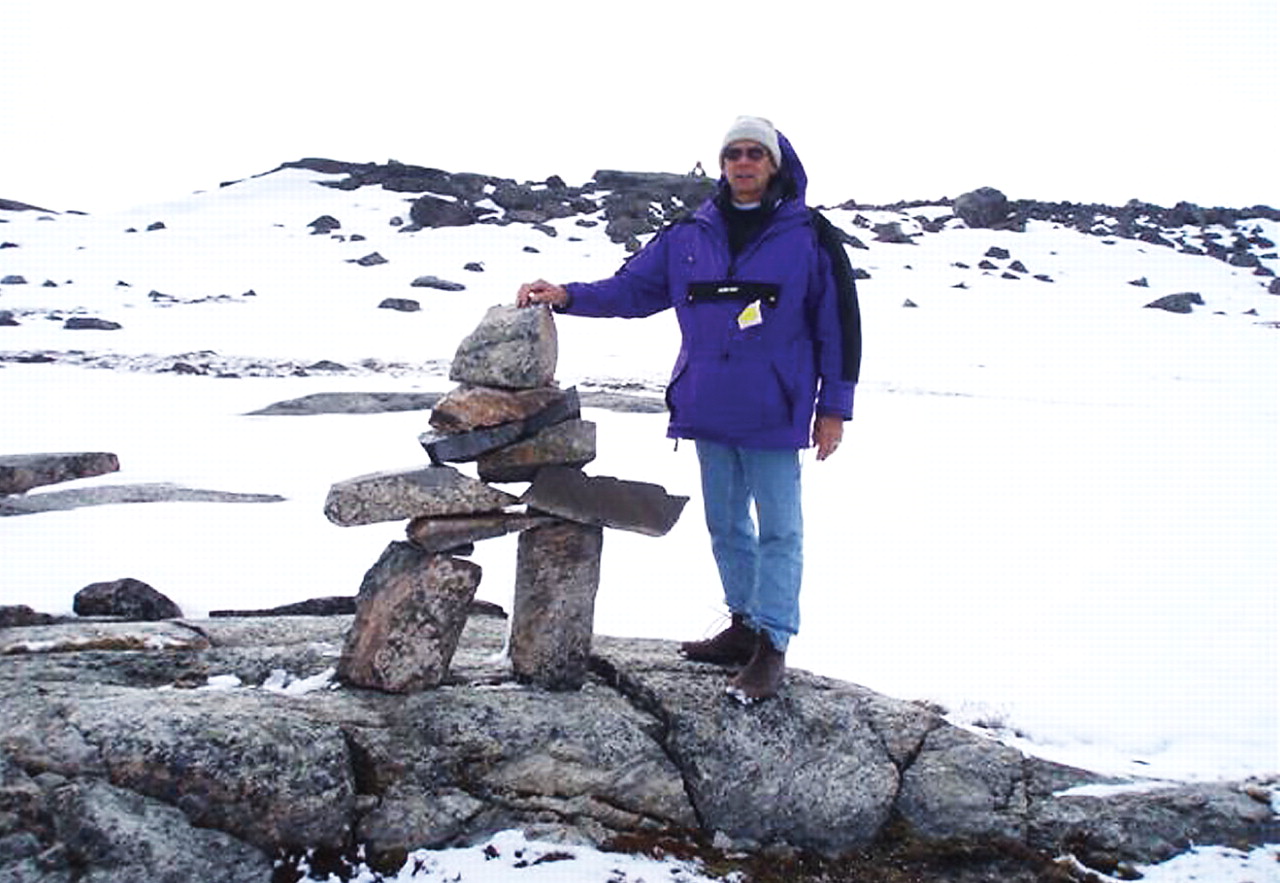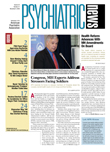Peter Uhlmann, M.D.'s, psychiatric practice covers an area of about 1.2 million square miles, pretty much everything east of the Yukon and west of Greenland, give or take an island or two.
For a total of three months every year, scattered over four trips in different seasons, Uhlmann flies from his home in Powell River, British Columbia, to half a dozen communities in the Canadian regions of the Northwest Territories and Nunavut.
Lighting out for the territories comes naturally for Uhlmann. His travels before and after settling in Powell River have taken him around the globe. A native of Chicago, he graduated from the University of Illinois at Chicago Medical School in 1965 and spent two years in the U.S. Public Health Service, first as a Peace Corps physician in Somalia and then on the Colville Indian Reservation in Washington state.
He and his wife discovered Powell River in 1969 and began building a house there. He split his psychiatry residency between the University of British Columbia and the University of Auckland in New Zealand.
He returned to Powell River, dividing his time between private practice and serving as director of psychiatry at Powell River General Hospital. While there, he helped develop a short-term assessment program—staffed by specially trained nurses backed up by the hospital psychiatrist and local family doctors—to serve as a single entry point for adults into the mental health services offered in the coastal town of 18,000 people.
Uhlmann's practice came to a temporary halt in 1994 when he was diagnosed with lymphoma. It took a few years for him to get back to work.
Beginning in 1996, he worked as a consulting psychiatrist at several mental health centers in British Columbia and then spent two years on a Navajo reservation in New Mexico. His time at the Crown Point, N.M., hospital of the U.S. Indian Health Service (IHS) reminded him of the differences between the U.S. and Canadian ways of practicing medicine.
Conditions Isolated and Cold
“In Canada I can practice as I see fit,” he said. “Working for the IHS was closer to the Canadian system, but I have avoided locums in the U.S. in nongovernment settings. It is medical practice suited to doctors and the health system, rather than patients.”
Since 2005, the provincial governments of the Northwest Territories and Nunavut have employed him to serve those half dozen isolated communities, which are accessible only by air.
Nunavut is the province carved out of the older and formerly larger Northwest Territories 10 years ago. The region is home to fewer than 30,000 people, mostly Inuit (the people formerly known as Eskimos). The region comprises 772,000 square miles of “rocky tundra with stunted vegetation located above the tree line [and] snow covered most of the year,” according to its government's Web site. Winter lasts nine months, and the average January temperature is 22 degrees below zero Fahrenheit. There is one 21-kilometer road between two towns. Ships or planes move people and goods in and out.
The Northwest Territories is nearly as isolated. Its 42,637 citizens live in its one city (Yellowknife, the capital, population 19,155) or are scattered across 425,000 square miles in 31 smaller settlements.
Uhlmann may take more than a dozen flights during a two-week stint in the Arctic because there are no direct flights between the small villages he serves. Air service depends on the weather. Once, an expected 45-minute flight cascaded into a 26-hour ordeal when the plane scheduled to pick him up arrived nine hours late. Uhlmann had to return to Yellowknife and take another series of flights. Accommodations are the local “hotel,” usually a mobile home.
“The people are wonderful, but there is never a simple case,” he said. “There is a lot of trauma, dysfunction, substance abuse, and violence.”
Forced Cultural Change Has Impact
He attributes these conditions to forced cultural change in the 1950s when the Canadian government pushed nomadic aboriginal people into permanent villages, destroying their traditional way of life.
Once in a clinic, Uhlmann can diagnose patients and recommend treatment to local personnel, but can't stay long enough to provide therapy. “Sometimes there are counseling services, sometimes not,” he said. The government flies in doctors and nurses to some clinics for a few weeks at a time on short-term contracts, so there's little continuity of care once Uhlmann returns home. One community saw 50 family doctors come and go in a single year, he said.
Uhlmann has an affinity for what he calls transcultural psychiatry. Besides the Canadian Arctic, he has consulted and worked at distant psychiatric outposts around the world, from China to Ukraine.
“In Powell River, I was part of the community, which gave me a good understanding of people and their lives,” he said. “Elsewhere, I have to accept the fact that I'm an outsider.”
That means adjusting to life on the tundra. Concepts of time are different, for instance. Patients frequently miss appointments, but Uhlmann has learned to team up with a nurse and just walk through the small community to the patient's house.
Low educational levels and poor English-language skills raise other barriers. If he needs a translator, he has to be careful, and not just with words. In these compact settlements, a local health department employee who knows English may also be related to the patient, who then might be less than forthcoming with someone he or she knows.
Sorting out these relationships to create a useful family history isn't simple either. The Inuit practice a form of cultural adoption, in which a person may claim many siblings, only one of whom is biologically related.
Part of Uhlmann's time in the north is spent teaching the local nurses and members of the Royal Canadian Mounted Police more about mental illness. Progress trying to link up with local governments or school systems has, however, gone slowly. He occasionally provided telepsychiatry services to his communities, but funding cuts have stopped that for the time being.
His travels and his illness have provided insights that continue to inform his remote practice, but he is also aware of its limitations.
“I know I'm doing something useful, but it's a stop-gap answer,” he concludes.

